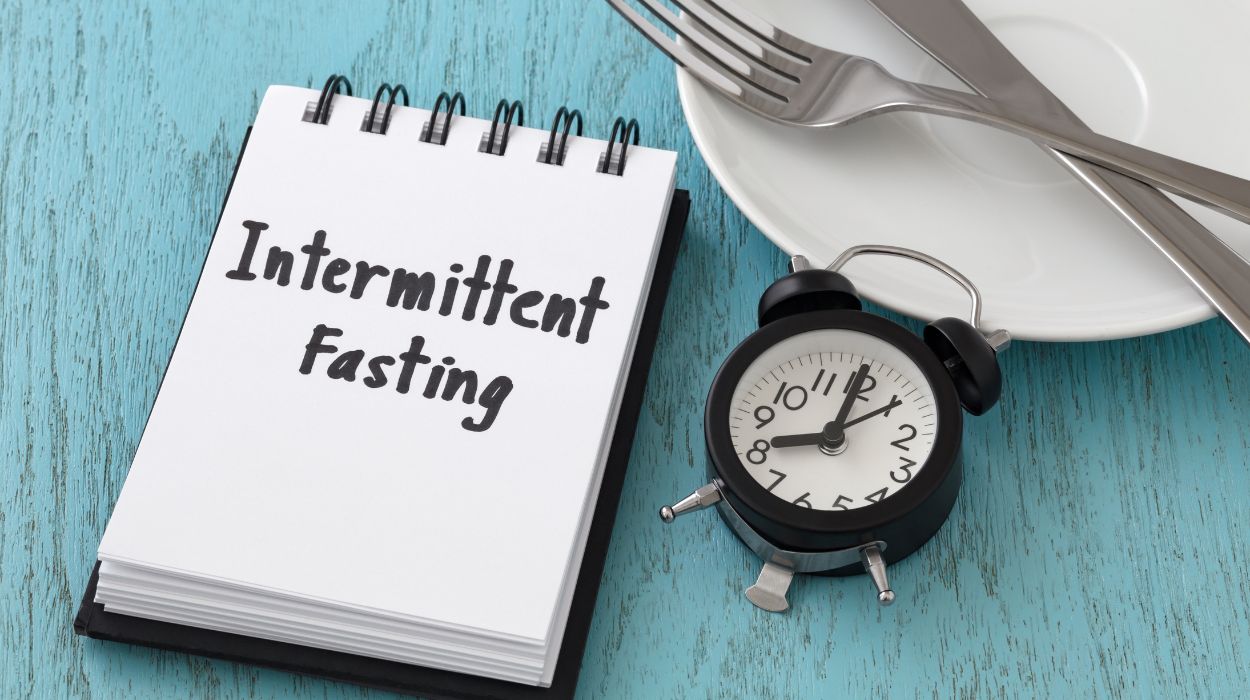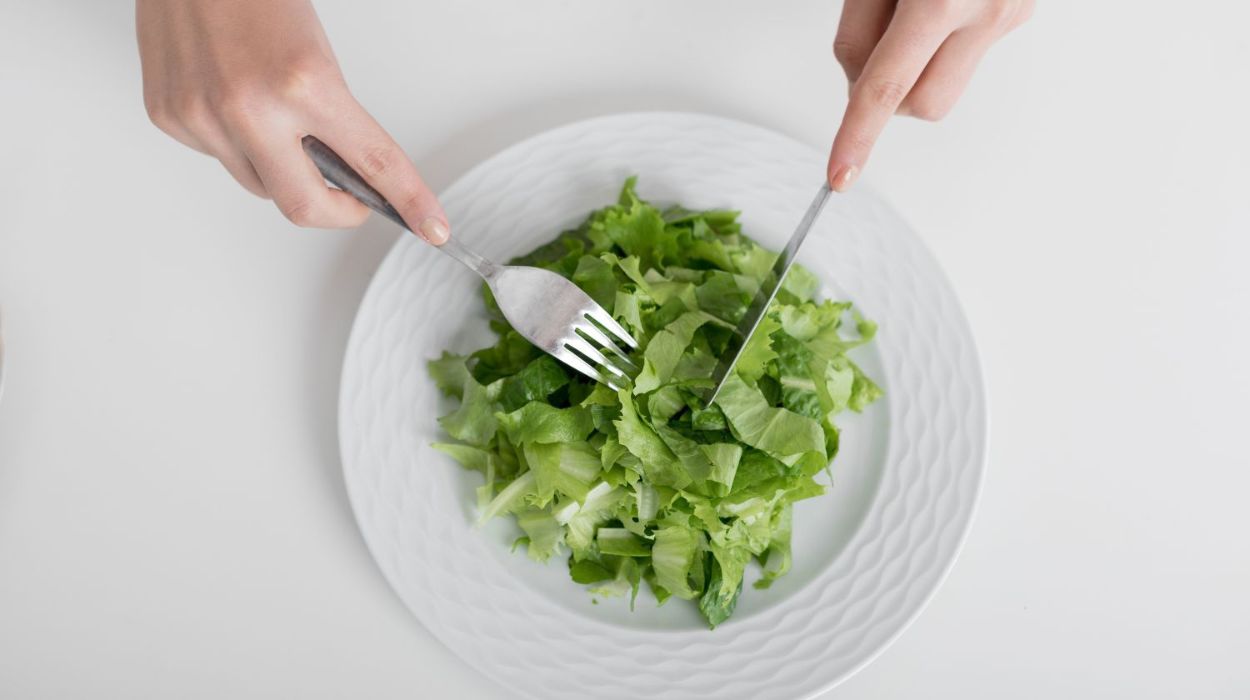 Expert's opinion
Expert's opinion
Expert's opinion
The article is a subjective view on this topic written by writers specializing in medical writing.
It may reflect on a personal journey surrounding struggles with an illness or medical condition, involve product comparisons, diet considerations, or other health-related opinions.
Although the view is entirely that of the writer, it is based on academic experiences and scientific research they have conducted; it is fact-checked by a team of degreed medical experts, and validated by sources attached to the article.
The numbers in parenthesis (1,2,3) will take you to clickable links to related scientific papers.
Intermittent Fasting Tips: When Is The Best Time To Eat?

Losing weight seems to be a focus for many people, and intermittent fasting[1] is a trend that is gaining popularity with a focus on eating fewer meals. Intermittent fasting has been shown to increase cognition and promote heart health, and physical functioning. Intermittent fasting has also been linked to fat loss, or a decrease in visceral fat, and can reduce blood glucose and blood triglyceride levels. The goal of intermittent fasting is continuous calorie restriction that tricks your body into burning fat, instead of glucose, for fuel.
The key to success with intermittent fasting is finding prolonged periods or fasting windows that work best for you and your lifestyle. There are several types of intermittent fasting, commonly known as 16/8, 5:2, warrior, alternate day, and eat-stop-eat. The fasting window puts your body into ketosis[2], where your only consumption is non-caloric beverages, water, black coffee, and herbal tea. The goal of your using this method is that the eating window is less restrictive than the keto diet, but should still focus on nutrient-dense, healthy food choices.
Tips For Intermittent Fasting
- 16/8 fasting
- The 5:2 diet
- Eat stop eat
- Alternate day fasting
- The warrior diet

What Is Intermittent Fasting?

Constant food intake is how many people eat, but research shows[3] that intermittent fasting is beneficial because your food intake is based on time eating, and less on quantity or quality of food. In fact, several types of intermittent fasting schedules allow you to eat anything you choose, but you should not develop an unhealthy relationship with food or make poor choices, because these can negate your fasting periods. A balanced diet that consists of nutrient dense foods, and a caloric intake that promotes weight loss is highly encouraged. During these periods of timed restriction, the goal is for you to only eat during a specific food window. For example, you may skip breakfast and only eat lunch and dinner. The rest of the day/night will be your restriction window and only non-caloric beverages are allowed.
How Does It Work?

Fasting does cause weight loss, but it also helps with reducing inflammation, along with regulating blood sugar and blood pressure. The science behind fasting is you lengthen the time your body burns fat after you have burned all the calories from your last meal. Meaning the longer you go without food, the more the body uses up sugar stores and begins burning fat. When your body goes without food, insulin levels drop. This is all part of the metabolic process which involves the liver metabolizing fat and increasing the fat burning process.
Tips For Intermittent Fasting
16/8 Fasting
The most popular type of intermittent fasting focuses on fasting for 16 hours a day and consuming your calories during an 8-hour window. During this time-restricted diet, you can only consume non-caloric beverages like herbal teas, black coffee, and water. During your 8-hour window of eating, there are no caloric restrictions, and you are free to eat whatever you want. Most people find this type of intermittent fasting works best if your fasting window is overnight, while you are sleeping and skipping breakfast. Your 8-hour window of eating begins around lunchtime and is most beneficial if healthy food options are chosen. This type of intermittent fasting gives you several food windows that can easily accommodate your lifestyle.
The 5:2 Diet
The 5:2 diet is more of a lifestyle in that you are eating your regular diet for 5 days and the other 2 remaining days you restrict calories to 500 to 600 calories per day. This concept is more about when you are eating, not what you are eating, although healthy food choices will increase your chances of weight loss because you have 2 days of caloric restriction. This type of intermittent fasting plan has been shown to help reduce insulin levels and insulin sensitivity.
Eat Stop Eat
Creating a calorie deficit is the focus on how to lose weight on an eat-stop-eat fasting plan. This type of intermittent fasting is based on restricting the time when you eat by days, with a complete break from food during that time. On your fasting day, it is important to stay hydrated and black coffee, herbal teas, water, sparkling water, and diet soda (in moderation) are allowed. On your eating days, you are allowed to eat whatever you want, but overeating is highly discouraged because it can sabotage the results of your fasting days. Lean protein should be your focus on your eating day, but you do not need to follow a strict keto-like diet.
Alternate Day Fasting
Alternate day fasting is a combination of intermittent fasting plans and can be the easiest for beginners to follow. Just as the name suggests, you have days of eating and days of restricting. You can tailor this plan to your lifestyle in that your fasting days can be uber strict allowing for only non-caloric beverages or you can limit your calories to 500 to 600 calories, like the 5:2 plan. If you are following this modified fast, it is best to consume foods high in protein and fiber, so you feel fuller.
The Warrior Diet
The warrior diet is the most difficult intermittent fasting plan, as the name suggests. Most of your day is spent fasting, with a larger meal at night. On this plan, exercise is scheduled during the times you are not eating. Approximately 20 hours of fasting is needed on the warrior diet, although small snacks and herbal teas, and water are encouraged. Your one meal a day is like a keto diet meal and should include healthy, nutrient-dense food choices, lean protein, and low carbohydrate options. The warrior diet encourages pairing proteins and vegetables together.
Benefits Of Intermittent Fasting

The benefits of intermittent fasting are plentiful, with weight loss at the top of the list. The outcome of this diet lifestyle may produce metabolic health results, such as blood sugar regulation, and a decrease in blood triglycerides because the focus of the diet is on healthy fats, lean protein, and low carbohydrates. Fasting triggers the body to use fat for fuel instead of glucose. Intermittent fasting[4] can lead to improvements in health conditions such as obesity, diabetes, cardiovascular disease, cancer, and neurological disorders.
Tricks Of The Trade
As with most things these days, there are Apps that can help you stay on track with maintaining your ideal body weight, monitor your food intake, suggest healthy food alternatives, encourage weight loss, and log your extended periods of fasting and non-fasting periods. Intermittent fasting can be difficult and challenging, but using all available resources can put you on the road to success and weight loss.
Conclusion
The goal of intermittent fasting may be weight loss, but you will also see other changes within your health profile. Intermittent fasting will boost your metabolism and promote fat loss, protect your body against chronic health conditions, lower the inflammation process and the diseases often associated with inflammation like cancer, heart disease, diabetes, arthritis, and Alzheimer’s. Although intermittent fasting is scheduled eating, with periods of fasting, there is a possibility that during the eating window, you may feel an increase in hunger. This may increase your appetite and have the opposite effect and increase your calorie intake, in turn resulting in weight gain, stomach discomfort, and poor eating habits. As with any diet, it is best to consult your physician prior to starting an intermittent fasting diet.
+ 4 sources
Health Canal avoids using tertiary references. We have strict sourcing guidelines and rely on peer-reviewed studies, academic researches from medical associations and institutions. To ensure the accuracy of articles in Health Canal, you can read more about the editorial process here
- Izzah Vasim, Chaudry Nasir Majeed and DeBoer, M.D. (2022). Intermittent Fasting and Metabolic Health. [online] 14(3), pp.631–631. doi:https://doi.org/10.3390/nu14030631.
- Gentil, P., Mancin, L., Bianco, A., Thomas, E., João Felipe Mota and Piccini, F. (2019). Ketogenic Diet and Microbiota: Friends or Enemies? [online] 10(7), pp.534–534. doi:https://doi.org/10.3390/genes10070534.
- Stockman, M.-C., Thomas, D. and Burke, J.M. (2018). Intermittent Fasting: Is the Wait Worth the Weight? [online] 7(2), pp.172–185. doi:https://doi.org/10.1007/s13679-018-0308-9.
- https://www.facebook.com/NIHAging (2020). Research on intermittent fasting shows health benefits. [online] National Institute on Aging. Available at: https://www.nia.nih.gov/news/research-intermittent-fasting-shows-health-benefits.



